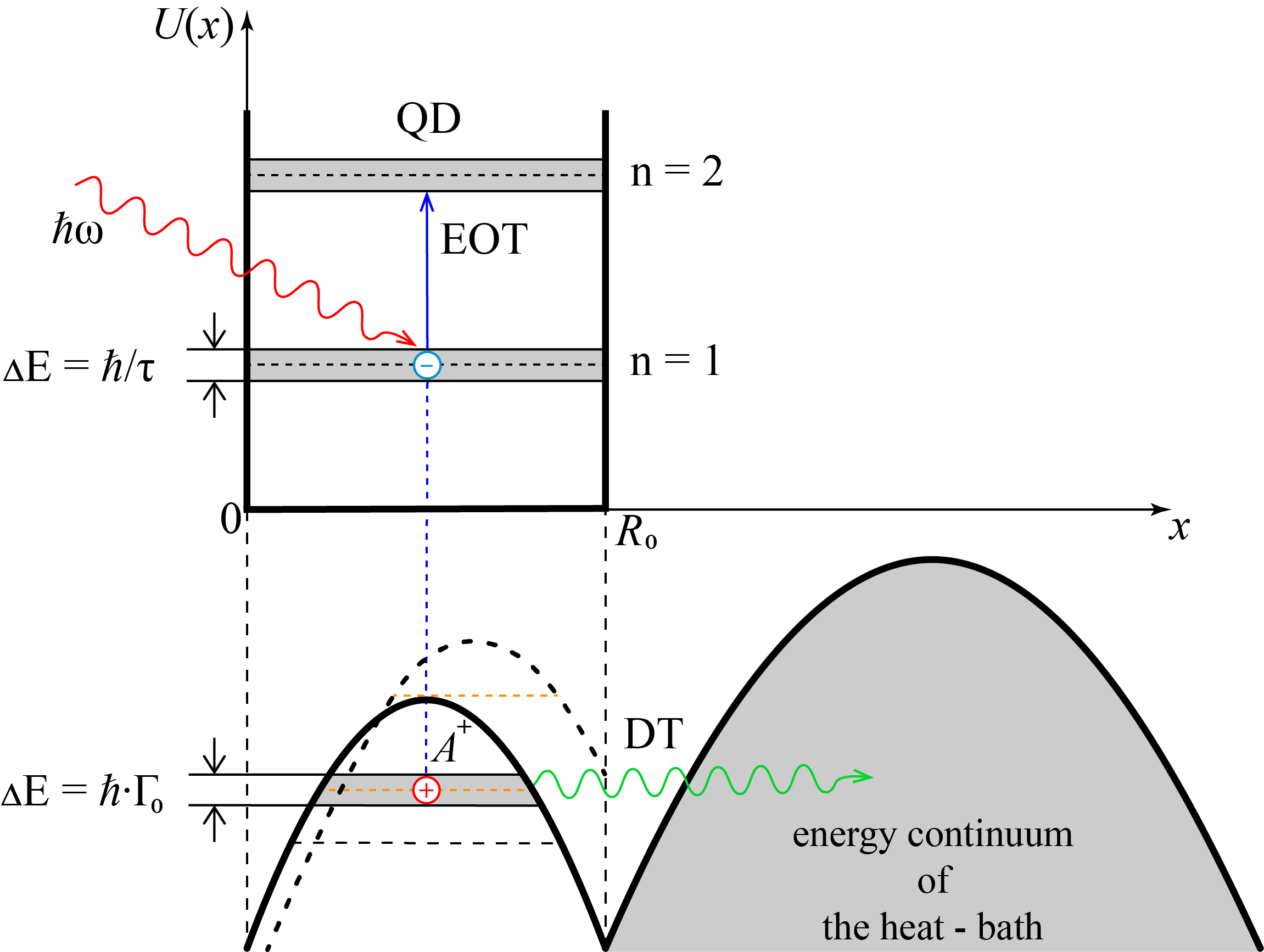Nanosystems: Phys. Chem. Math., 2022, 13 (3), 250–264
Influence of dissipative tunneling on the photodielectric effect associated with the excitation of impurity complexes A+ + e in a quasi-zero-dimensional structure
Vladimir D. Krevchik – Penza State University, Physics Department, Penza, Russia
Alexey V. Razumov – Penza State University, Physics Department, Penza, Russia
Mikhail B. Semenov – Penza State University, Physics Department, Penza, Russia; misha29.02.1@gmail.com
Alexander V. Levashov – Penza State University, Physics Department, Penza, Russia
Alexey V. Shorokhov – Penza State University, Physics Department, Penza, Russia; University of Jyväskylä, Seminaarinkatu, Finland; alex.shorokhov@gmail.com
Corresponding author: Alexey Vladimirovich Shorokhov, alex.shorokhov@gmail.com
DOI 10.17586/2220-8054-2022-13-3-250-264
PACS 73.40.Gk, 03.65.Xp
ABSTRACT Effect of tunneling decay for the quasi-stationary A+-state, in an impurity complex A+ + e (a hole, localized on a neutral acceptor, interacting with an electron, localized in the ground state of a quantum dot) on the photodielectric effect, associated with the excitation of impurity complexes A+ + e in a quasi-zero-dimensional structure, has been studied in the zero-radius potential model in the one-instanton approximation. Calculation of the binding energy of a hole in an impurity complex A+ + e was performed in the zero radius potential model in the adiabatic approximation. It is shown that as the probability of dissipative tunneling increases, the binding energy of a hole in a complex A+ + e decreases, which is accompanied by an increase in the effective localization radius of the impurity complex and, accordingly, an increase in the magnitude of the photodielectric effect. The spectral dependence of the photodielectric effect has been calculated in the dipole approximation taking into account the dispersion of the quantum dot radius. A high sensitivity of the magnitude of the photodielectric effect to such parameters of dissipative tunneling as the frequency of the phonon mode, temperature, and coupling constant with the contact medium, has been revealed.
KEYWORDS photodielectric effect, quantum dot, adiabatic approximation, impurity complex, relative permittivity, dissipative tunneling, adiabatic potential, quasi-zero-dimensional structure
ACKNOWLEDGEMENTS The work was supported by a grant from the Ministry of Science and Higher Education of the Russian Federation 0748-2020-0012.
FOR CITATION Krevchik V.D., Razumov A.V., Semenov M.B., Levashov A.V., Shorokhov A.V. Influence of dissipative tunneling on the photodielectric effect associated with the excitation of impurity complexes A+ + e in a quasi-zero-dimensional structure. Nanosystems: Phys. Chem. Math., 2022, 13 (3), 250–264.
[In Russian] В.Д. Кревчик, А.В. Разумов, М.Б. Семенов, А.В. Левашов, А.В. Шорохов
Влияние диссипативного туннелирования на фотодиэлектрический эффект, связанный с возбуждением примесных комплексов A+ +e в квазинульмерной структуре
АННОТАЦИЯ Влияние туннельного распада квазистационарного A+-состояния в примесном комплексе A+ + e (дырка, локализованная на нейтральном акцепторе, взаимодействующая с электроном, локализованным в основном состоянии квантовой точки) на фотодиэлектрический эффект , связанный с возбуждением примесных комплексов A+ + e в квазинульмерной структуре, изучено в модели потенциала нулевого радиуса в одноинстантонном приближении. Расчет энергии связи дырки в примесном комплексе A+ + e выполнен в модели потенциала нулевого радиуса в адиабатическом приближении. Показано, что с увеличением вероятности диссипативного туннелирования энергия связи дырки в комплексе A+ + e уменьшается, что сопровождается увеличением эффективного радиуса локализации примесного комплекса и, соответственно, увеличением величины фотодиэлектрический эффект. Спектральная зависимость фотодиэлектрического эффекта рассчитана в дипольном приближении с учетом дисперсии радиуса квантовой точки. Выявлена высокая чувствительность величины фотодиэлектрического эффекта к таким параметрам диссипативного туннелирования, как частота фононной моды, температура и константа связи с контактной средой.
КЛЮЧЕВЫЕ СЛОВА фотодиэлектрический эффект, квантовая точка, адиабатическое приближение, примесный комплекс, относительная диэлектрическая проницаемость, диссипативное туннелирование, адиабатический потенциал, квазинульмерная структура.
